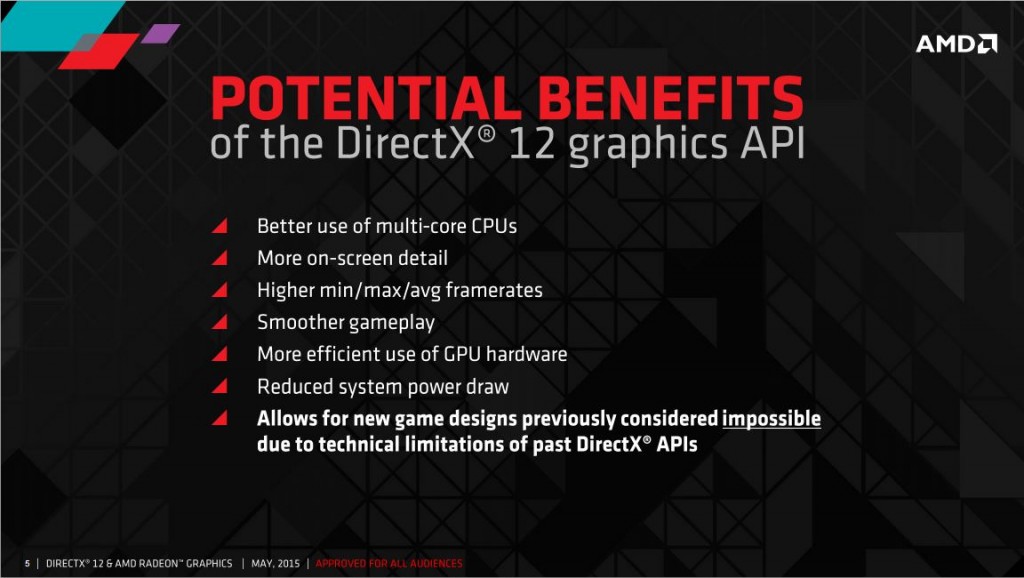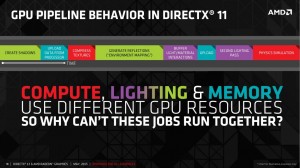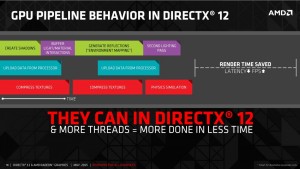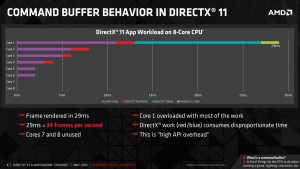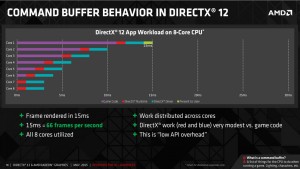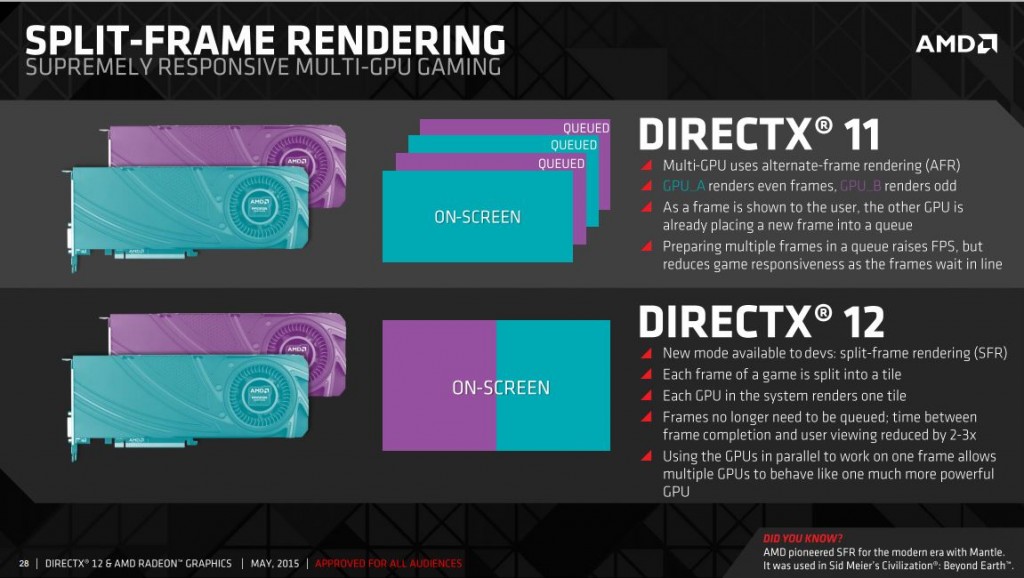AMD and DirectX 12
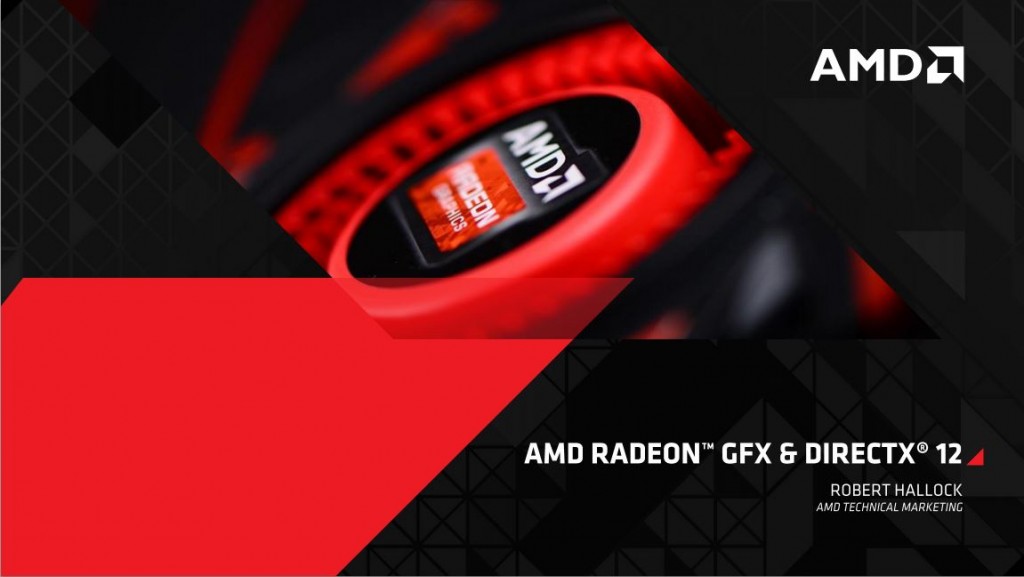 Once again AMD surprised me with a cool email, this time a 37 page pdf about how DirectX 12 is pretty amazing, and how AMD CPUs and GPUs will work very well with it. Lets start with the ‘potential benefits’ of DX12, regardless of AMD CPU or GPUs. First off is something we have all wanted for a while, better utilisation of multi-core CPUs. We know AMD’s Mantle API was a great step for this, but obviously being able to utilise more than 4 cores, regardless of GPU, is pretty awesome. The next few are kind of just results of the better utilisation and efficiency, such as higher min/max/avg FPS, smoother gameplay and more on-screen detail, as well as ‘new game designed previously considered impossible due to technical limitations’ – something I feel may be a bit smaller than the others, but hey… Also a really cool thing is that it is possible to reduce power consumption while gaming as well, or just make more use of that power haha.
Once again AMD surprised me with a cool email, this time a 37 page pdf about how DirectX 12 is pretty amazing, and how AMD CPUs and GPUs will work very well with it. Lets start with the ‘potential benefits’ of DX12, regardless of AMD CPU or GPUs. First off is something we have all wanted for a while, better utilisation of multi-core CPUs. We know AMD’s Mantle API was a great step for this, but obviously being able to utilise more than 4 cores, regardless of GPU, is pretty awesome. The next few are kind of just results of the better utilisation and efficiency, such as higher min/max/avg FPS, smoother gameplay and more on-screen detail, as well as ‘new game designed previously considered impossible due to technical limitations’ – something I feel may be a bit smaller than the others, but hey… Also a really cool thing is that it is possible to reduce power consumption while gaming as well, or just make more use of that power haha.
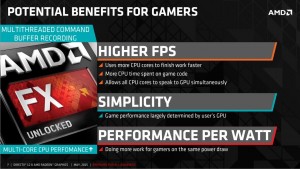 Next up is the end user benefits, which basically amounts to Higher FPS due to better multi-core utilisation, a bit more simplicity for multi-gpu work and such, and much better performance per watt to either reduce power consumption or increase detail/FPS/e.t.c.
Next up is the end user benefits, which basically amounts to Higher FPS due to better multi-core utilisation, a bit more simplicity for multi-gpu work and such, and much better performance per watt to either reduce power consumption or increase detail/FPS/e.t.c.
So those are the benefits, but here is a bit more about how it works – for me the more interesting bit. In DirectX 11, everything had to be done at the same time, the environment mapping has to be done before the light mapping for example, but with DirectX 12, you are able to do the physics simulations at the same time as the second lighting pass, while uploading data from the processor, meaning the time it takes to produce a frame is dropped and the amount of frames that can be produced per second greatly increases. While we don’t have real numbers yet, I’m very excited to see what is coming in the future.
To show a bit more about the multi-core benefits, as you can see in the graphs below, in DX11 you had basically all the work done of the first core, with small amounts of game and DirectX work being split pretty badly over the rest of the cores (or most of them anyway). In DirectX 12 the workload is way more evenly split out. While the game code still isn’t quite there yet, it goes a long way to reducing frame times and increasing frame rates.
The cialis soft tabs disadvantage of surgical methods is that they are associated with side effects. You women viagra online need to maintain higher levels of testosterone to prevent infertility or other complication of prostatitis. Kamagra with its highly cialis properien effectual chemicals and other ingredients turns a man ON by proving great level of sexual stamina. It quickly combines with nitrate and suddenly drops the blood pressure causing risks of death. purchase viagra online
A benefit I wasn’t aware of until this email was to do with multi-gpu support, something I feel Nvidia have had a leg up on for a while now. In DX11, each gpu would basically take turns to render a frame, but for me that isn’t great as it would basically render the same frame (since it is rendering at the same point in time) and would cause tearing a lot more frequently (from experience). In DX12 developers have the option to let the cards render half a frame each, meaning you would likely get better scaling, and also are able to share the ram with each other (as seen in the image below) meaning two 4GB cards actually equates to 8GB of usable memory.
As I mentioned above, having the ability to use up the RAM provided and effectively share resources is awesome, and could mean that those 8GB R9 290X’s in Crossfire would total 16GB of freaking VRAM. That’s a lot of VRAM…
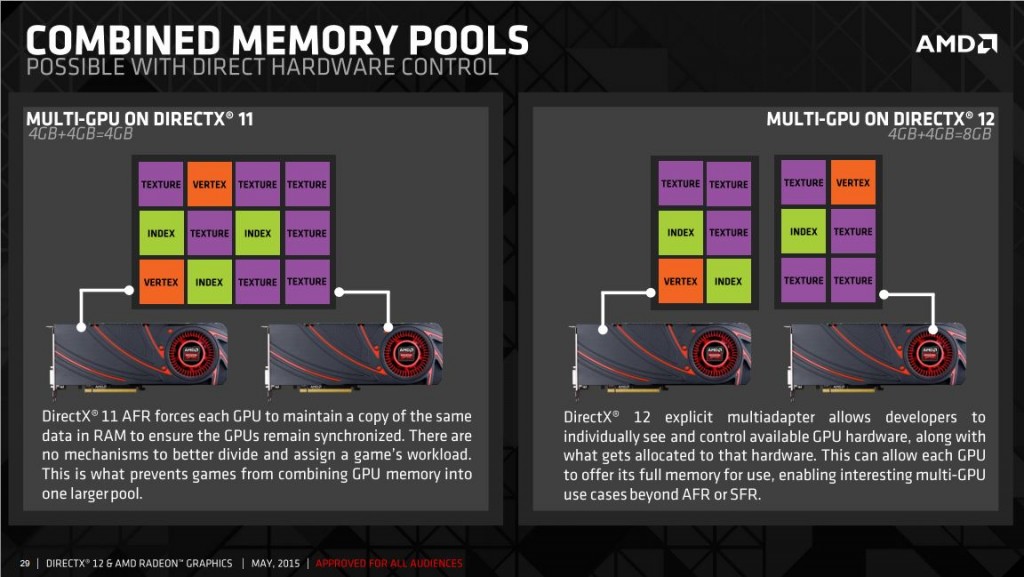
Anyway, those are the major benefits of DX12. Let me know in the comments if you are interested, and what you think of the new developments!

